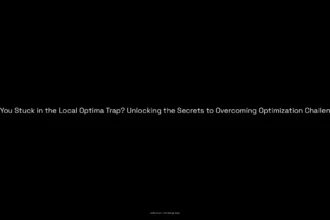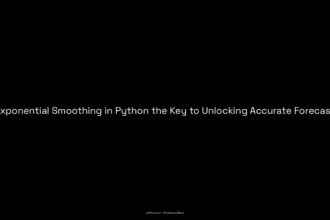Artificial intelligence continues to advance at a rapid pace, and one of the most exciting developments is the rise of agentic AI systems. These systems can pursue complex goals autonomously, using reasoning and minimal direct supervision. To support the creation of such intelligent agents, developers have introduced various AI agent frameworks. In this article, we’ll explore three prominent frameworks—AutoGen, CrewAI, and LangGraph—to help you understand their features, advantages, and drawbacks.
Table of Contents
ToggleUnderstanding AI Agent Frameworks
Before diving into the specifics, it’s essential to grasp what AI agent frameworks are. In software development, frameworks provide a foundation that simplifies common tasks, allowing developers to focus on building their applications more efficiently. Similarly, AI agent frameworks offer tools, models, and capabilities that streamline the development of multi-agent systems. These systems enable agents to collaborate and reason together to accomplish complex tasks with limited human intervention.
AutoGen
Overview
AutoGen is an open-source framework developed by Microsoft that leverages multiple conversational agents to facilitate complex workflows. It simplifies the implementation of intricate AI tasks by allowing agents to collaborate seamlessly. The framework uses “Conversational Agents” as its building blocks, supporting diverse conversation patterns to achieve various objectives.
Pros
- Powerful Multi-Agent Collaboration: AutoGen excels at enabling multiple agents to interact effectively, making it ideal for tasks that require coordination among different AI components.
- Ease of Implementation: Despite its robust capabilities, AutoGen offers a straightforward approach to setting up multi-agent conversations.
- Active Community Support: A vibrant community of users and developers backs AutoGen, providing resources, sharing knowledge, and contributing to its ongoing improvement.
- Scalability with Azure Integration: Direct integration with Azure OpenAI ensures that AutoGen can scale efficiently to handle large and complex workloads.
- Enhanced Security Features: The framework supports containerized code execution, adding an extra layer of safety and isolation for AI deployments.
Cons
- Active Development Phase: Being in active development, AutoGen may exhibit inconsistencies in certain use cases and might not yet offer full stability.
- Potential for Infinite Loops: Without proper tuning, agents could enter infinite loops, leading to increased computational costs and resource usage.
- Limited Support for Open-Source LLMs: Currently, AutoGen offers limited compatibility with open-source Large Language Models (LLMs), potentially restricting model choices.
- Less Granular Process Control: Compared to other frameworks, AutoGen provides less fine-grained control over the AI processes and workflows.
CrewAI
Overview
CrewAI is a cutting-edge framework designed for orchestrating role-playing autonomous AI agents. It allows agents to work together by assigning specific roles, backgrounds, goals, and memories to each agent. CrewAI focuses on making multi-agent systems more accessible and user-friendly, emphasizing ease of learning and implementation.
Pros
- User-Friendly Interface: CrewAI offers an intuitive interface, making it easier for developers to get started without steep learning curves.
- Suitable for Simpler Tasks: With production-ready features, CrewAI is well-suited for tasks that don’t require extensive complexity or customization.
- Excellent Support for Open-Source LLMs: The framework provides robust support for open-source LLMs, offering greater flexibility in model selection.
- Comprehensive Documentation: Detailed guides and documentation help users navigate the framework effectively, reducing development time and potential confusion.
Cons
- Active Development Phase: Like AutoGen, CrewAI is still evolving, which may result in inconsistent performance or limited features in certain scenarios.
- Performance Tuning Required for Complex Tasks: Achieving optimal performance for more complex workflows may require significant effort and fine-tuning.
- Limited Control Over Safety and Privacy: The framework offers less control over safety features and privacy settings, which could be a concern for sensitive applications.
LangGraph
Overview
LangGraph is a library aimed at building stateful, multi-actor applications using LLMs. It allows developers to create agent and multi-agent workflows with cycles, providing fine-grained control over application flow and state. LangGraph is particularly useful for applications requiring cyclic computational steps, going beyond the capabilities of typical Directed Acyclic Graphs (DAGs).
Pros
- Fine-Grained Control: LangGraph provides a low-level interface, allowing developers to meticulously control processes and outputs to meet specific requirements.
- Ideal for Cyclic Workflows: The framework excels in handling workflows that involve cycles, offering capabilities that might be lacking in other frameworks.
- Integration with LangChain Ecosystem: Being part of the LangChain family, it benefits from existing tools and familiarity for those already using LangChain.
- Modern and Maintainable Code Structure: LangGraph employs an organized code structure, aiding in long-term project sustainability and ease of maintenance.
Cons
- Less Mature Framework: As a relatively new entrant, LangGraph may not handle complex use cases as robustly as more established frameworks.
- Steeper Learning Curve: Developers unfamiliar with graph concepts might find it challenging to understand and configure the framework effectively.
- Limited Documentation and Resources: Compared to other options, LangGraph offers fewer learning materials and community support, potentially slowing down development.
- Potential Performance Overhead: The cyclical graph structure might introduce extra computational overhead for simpler tasks, making it less efficient in some cases.
Making the Right Choice
Choosing the appropriate AI agent framework depends on your project’s specific needs. If you’re looking for powerful multi-agent collaboration with scalability and don’t mind being part of an evolving platform, AutoGen might be the right choice. For those prioritizing ease of use and working on less complex tasks, CrewAI offers a user-friendly experience with solid support for open-source models. If your project requires fine-grained control and involves complex, cyclic workflows, LangGraph could provide the capabilities you need, especially if you’re already familiar with LangChain.
More — AI Use Cases by Industry: Transforming Operations and Personalized Experiences Across Sectors
Conclusion
AI agent frameworks like AutoGen, CrewAI, and LangGraph are shaping the future of intelligent systems by enabling developers to build sophisticated AI agents more efficiently. Each framework brings unique strengths and considerations, so it’s crucial to assess your project’s requirements carefully. Experimenting with these frameworks can provide valuable insights and help you select the best tool for your AI development journey.





